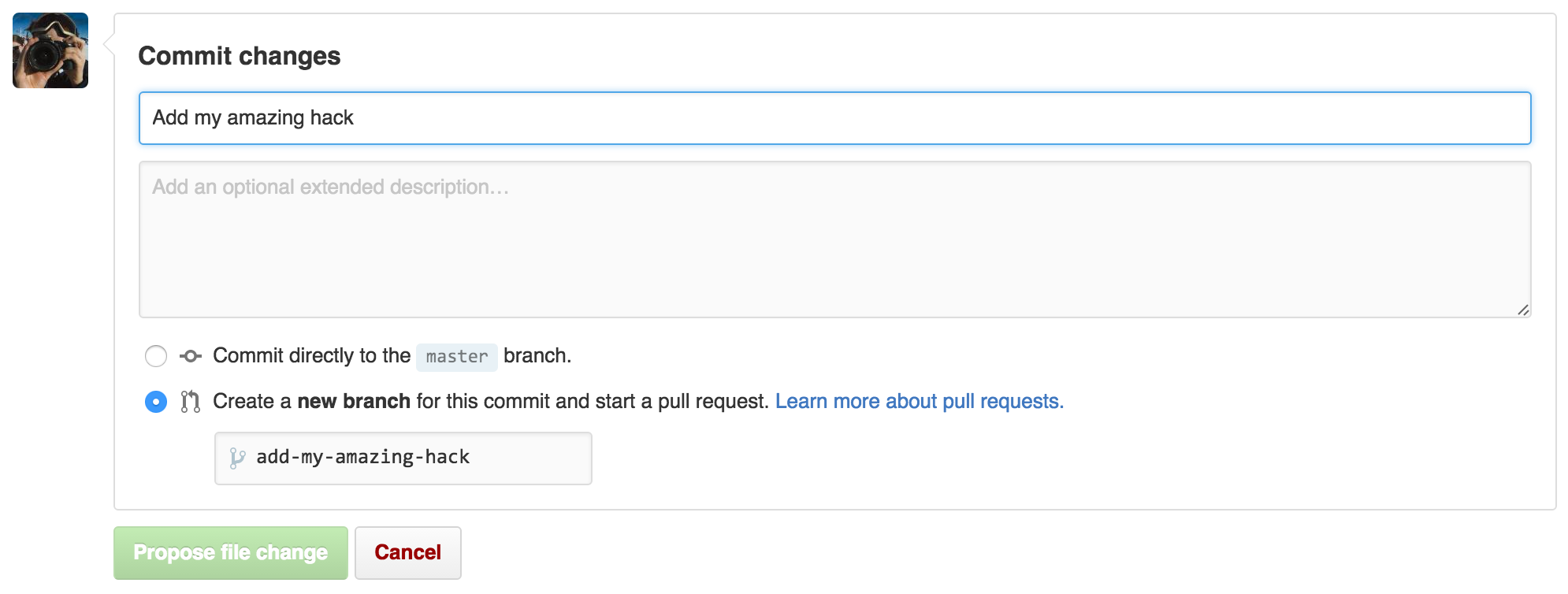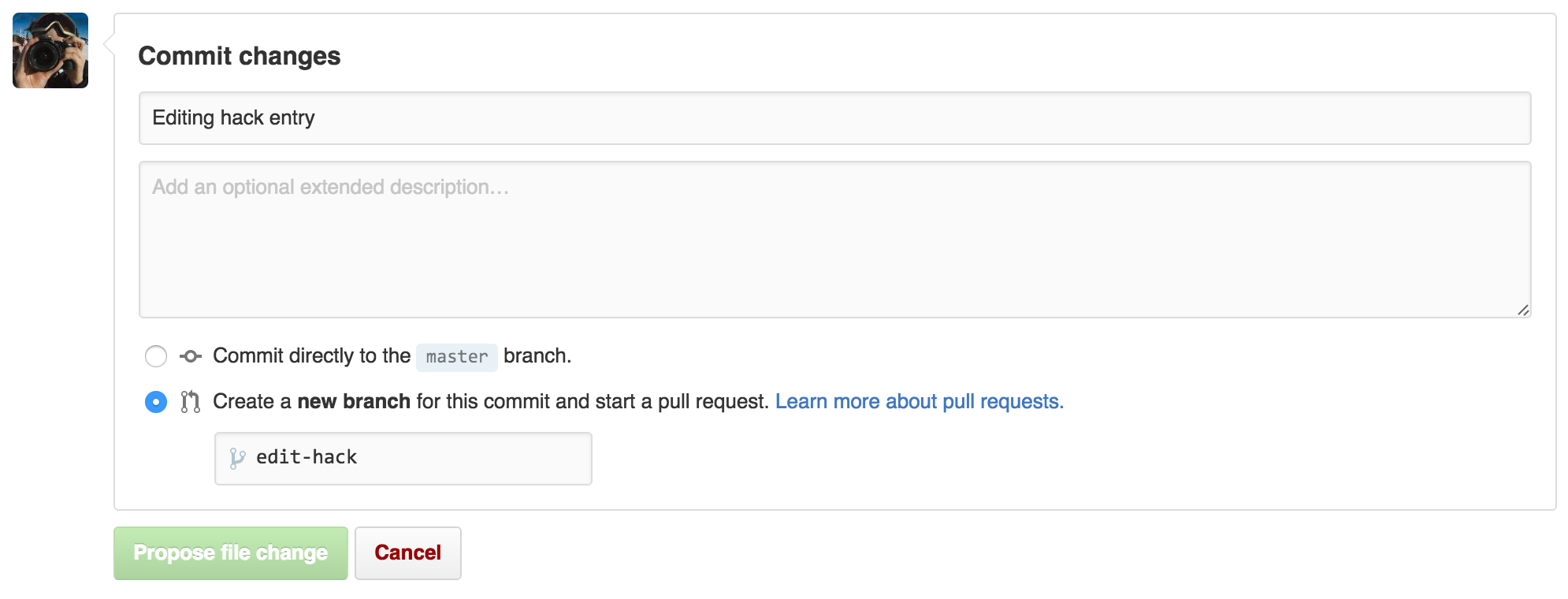This repository is intended to contain information about all hacks (coding or otherwise) that have been carried out as part of the .Astronomy meetings. Each meeting has a folder which in turn contains one file for each hack. Adding a file to this repository is easy, and we describe the file format and the steps to take to add a file below.
To see a prettified web site listing these hacks, check out https://astrohackweek.org/hacks-collector/.
Go to the hack submission web app and enter the relevant details. This will create a pull request from you automatically, which you can modify later if desired (see the section on Updating a hack).
First navigate to the correct conference folder e.g. astrohackweek17, then click on the "Create new file" button on the top right side of the page.
Each hack should be described by a file that looks like this:
title: My awesome hack
creators:
- Anne Onymous
- John Doe
description: this was a hack to do this really cool thing
source-url: http://github.com/hacker1/hack1
live-url: http://hack1.herokuapp.com
doi: http://zenodo.org/1029812
images: hack1.jpg
This format is provided in the template.yml file in this repo. The file format is called YAML, but you don't need to worry if you don't know this or how to submit the pull-request - we explain all the details below.
The title, creators, and description fields are always required
The following fields are optional:
-
source-url: for code hacks, this is the URL or URLs to where the source code for the hack is stored - this can be for example a GitHub or BitBucket repository. -
live-url: when applicable, this is the URL or URLs for the 'finished' product, for example a website or a video link. -
doi: if you archive your hack on a service such as Zenodo or figshare (and we highly encourage you to do so - see instructions below), this is the DOI to that archived version. -
images: if you have screenshots or other related images for your hacks, you can include the filenames here, and include the images in your submission. -
contact-email: contact details for one of the hack participants who we could contact in future if needed. -
contact-github: the GitHub username for one or more of the hack participants who we could contact in future if needed. -
orcid: the ORCID(s) for one or more of the participants
Note that if you need to give multiple values for a field (such as for creators, URLs, ORCID IDs), you can use the following syntax:
fieldname:
- value1
- value2
If you want to put a paragraph of text, e.g. for the description, you can do:
fieldname: >
Hic autem sit officia. Et accusantium molestias dicta laboriosam qui.
Deleniti est soluta voluptatem aut. Officia sed ipsum iste quos debitis
modi aut. Est nihil in ea harum animi est doloremque. Aut ut aut aut.
That is, you should put a > on the first line then indent all the rest by a
couple of spaces.
Once you are happy with the .yml file describing your hack, scroll to the bottom of the page and select the "Create a new branch" option to start a pull request.
Make sure you give an appropriate commit message and then click on the big green "Propose new file" button.
This will then set up a pull request for you and will let the .Astronomy team know that you would like your hack added to this repo and then if everything is ok with your submitted .yml file and it passes our tests then we'll merge your changes.
Ta Da! Your hack is now archived for the joy of future generations!
Whether you submit a hack via the web form or via GitHub, subsequent updates should be done via GitHub. Assuming that the hack entry you want to edit is inside the main hacks-collector repository, navigate to the folder for the relevant .Astronomy meeting, then click on the file you want to edit. Once the contents of the file show, click on the pen icon in the upper right to edit the file:
Once you have made the edits, scroll down to the bottom of the page, and then enter a commit message and select to create a new branch, optionally giving a name to the branch:
You can also add the AstroHackWeek shield badge to the README.md file of your hack's source code by including the following markdown code:





